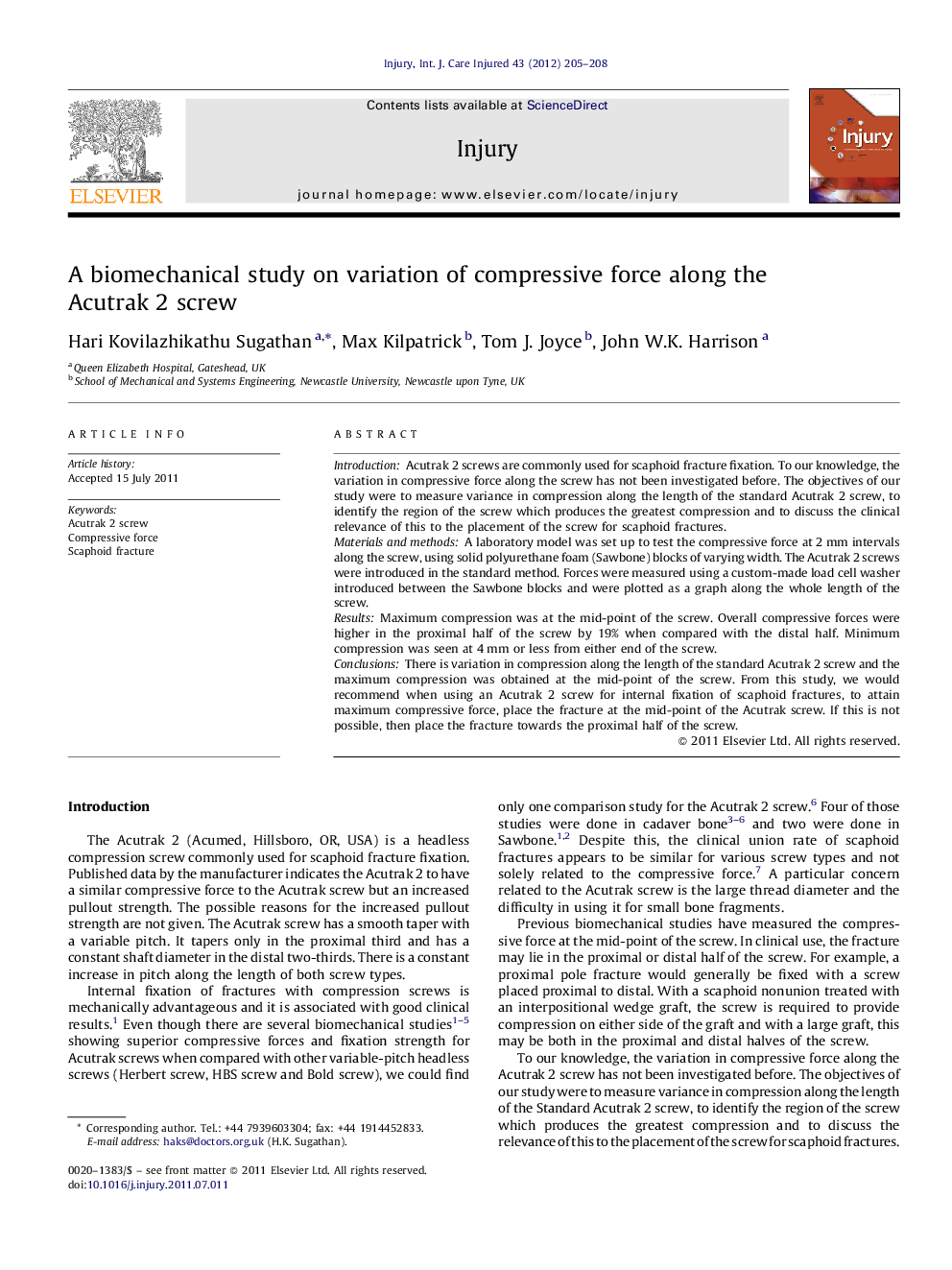| Article ID | Journal | Published Year | Pages | File Type |
|---|---|---|---|---|
| 3239772 | Injury | 2012 | 4 Pages |
IntroductionAcutrak 2 screws are commonly used for scaphoid fracture fixation. To our knowledge, the variation in compressive force along the screw has not been investigated before. The objectives of our study were to measure variance in compression along the length of the standard Acutrak 2 screw, to identify the region of the screw which produces the greatest compression and to discuss the clinical relevance of this to the placement of the screw for scaphoid fractures.Materials and methodsA laboratory model was set up to test the compressive force at 2 mm intervals along the screw, using solid polyurethane foam (Sawbone) blocks of varying width. The Acutrak 2 screws were introduced in the standard method. Forces were measured using a custom-made load cell washer introduced between the Sawbone blocks and were plotted as a graph along the whole length of the screw.ResultsMaximum compression was at the mid-point of the screw. Overall compressive forces were higher in the proximal half of the screw by 19% when compared with the distal half. Minimum compression was seen at 4 mm or less from either end of the screw.ConclusionsThere is variation in compression along the length of the standard Acutrak 2 screw and the maximum compression was obtained at the mid-point of the screw. From this study, we would recommend when using an Acutrak 2 screw for internal fixation of scaphoid fractures, to attain maximum compressive force, place the fracture at the mid-point of the Acutrak screw. If this is not possible, then place the fracture towards the proximal half of the screw.
